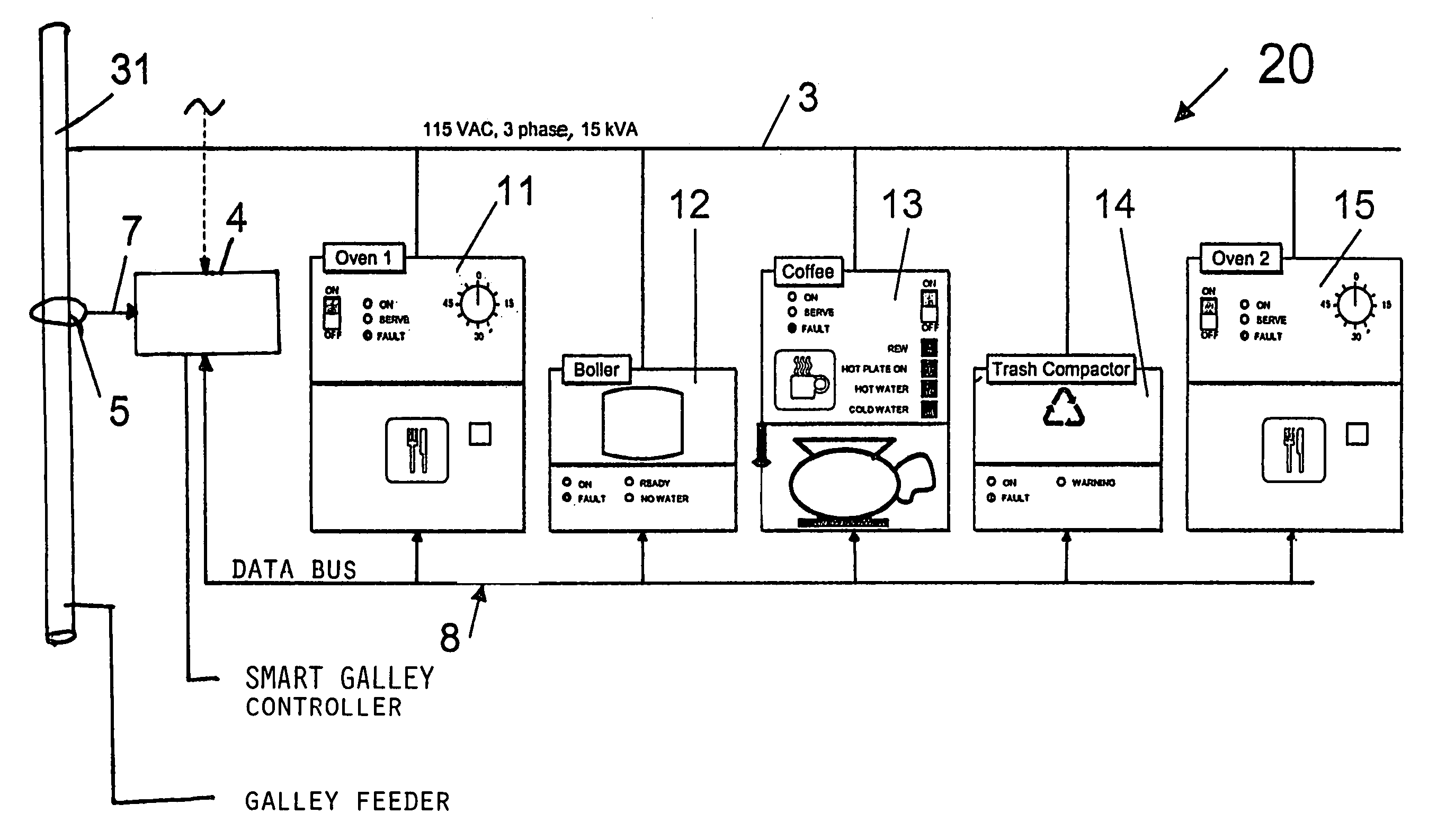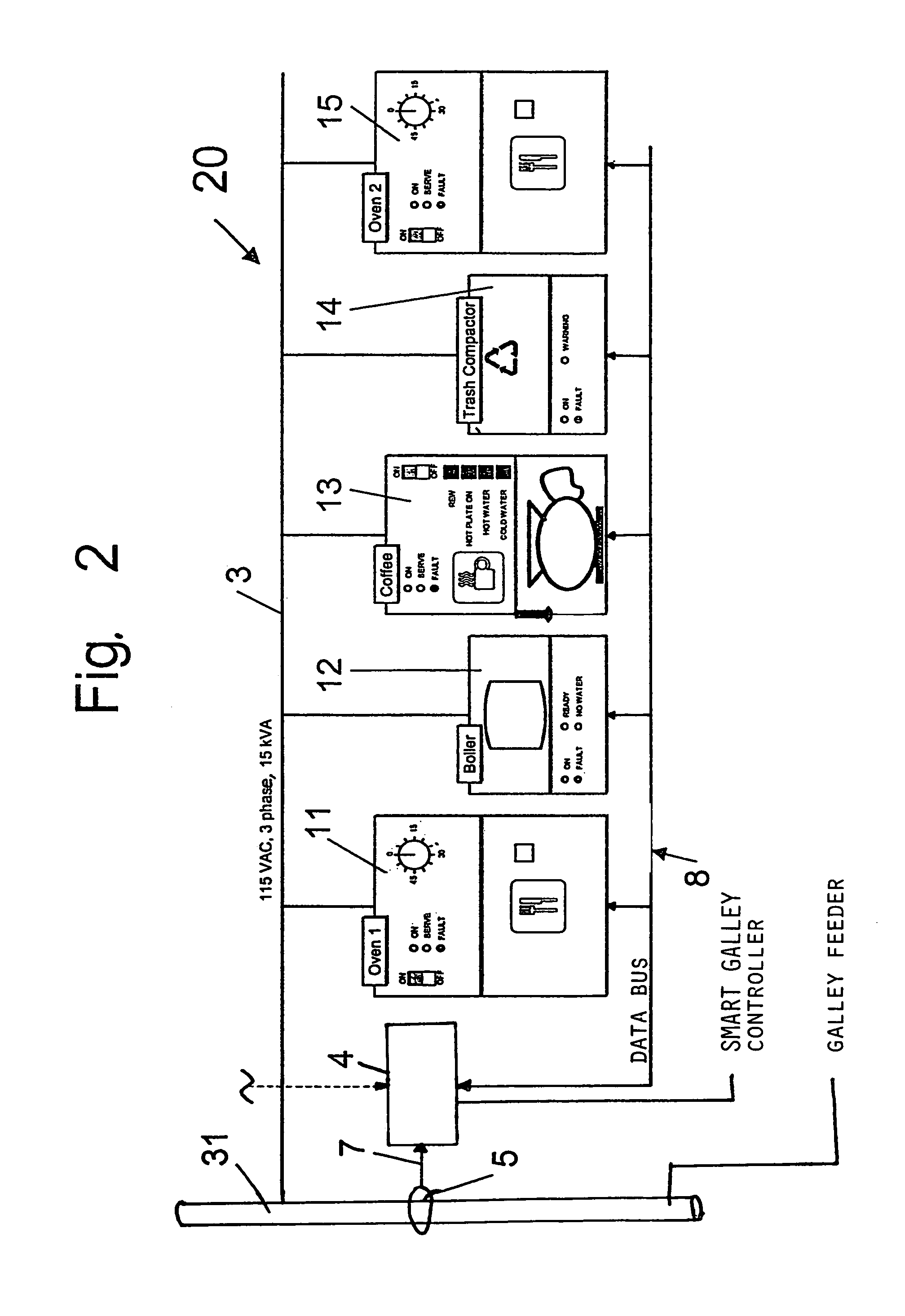Intelligent power distribution management for an on-board galley of a transport vehicle such as an aircraft
a technology for transport vehicles and on-board galleys, applied in the field of intelligent power distribution management for on-board galleys or kitchens of passenger transport vehicles, can solve the problems of simultaneous full load utilization of all electrical consumption devices, unnecessary weight, complexity, cost of power supply systems and their components, etc., to achieve optimal utilization of all available installed devices, reduce peak consumption loads, avoid or reduce unnecessary over-consumption of power
- Summary
- Abstract
- Description
- Claims
- Application Information
AI Technical Summary
Benefits of technology
Problems solved by technology
Method used
Image
Examples
Embodiment Construction
[0020]The block diagram of FIG. 1 provides a schematic overview of an energy or power supply arrangement 1 for supplying electrical power to electrical consuming devices 11, 12, . . . 1n, 21, 22, . . . 2n and n1, n2, . . . nn of an on-board galley 20 of a passenger transport aircraft. The electrical power or energy available for use in the galley 20 is typically limited, and is provided by a current source, or in general an electrical power source 2. A power distribution network 3 includes a plurality of power supply circuits or branch feeder lines 31, 32 . . . 3n, to which the electrical consuming devices 11 . . . 1n, 21 . . . 2n and n1 . . . nn are connected by individual associated connection or branch lines 9, so as to supply the respective required power or current to each individual electrical consuming device.
[0021]The arrangement 1 further includes a control unit 4 to monitor and control the supply of power through at least one of the power supply circuits 31, 32 or 3n, or p...
PUM
 Login to View More
Login to View More Abstract
Description
Claims
Application Information
 Login to View More
Login to View More - R&D
- Intellectual Property
- Life Sciences
- Materials
- Tech Scout
- Unparalleled Data Quality
- Higher Quality Content
- 60% Fewer Hallucinations
Browse by: Latest US Patents, China's latest patents, Technical Efficacy Thesaurus, Application Domain, Technology Topic, Popular Technical Reports.
© 2025 PatSnap. All rights reserved.Legal|Privacy policy|Modern Slavery Act Transparency Statement|Sitemap|About US| Contact US: help@patsnap.com



